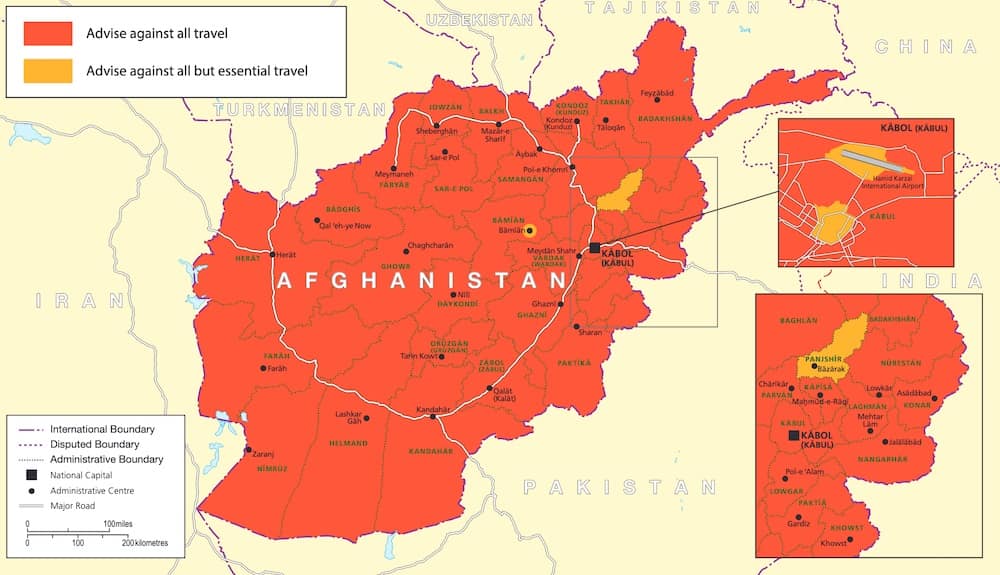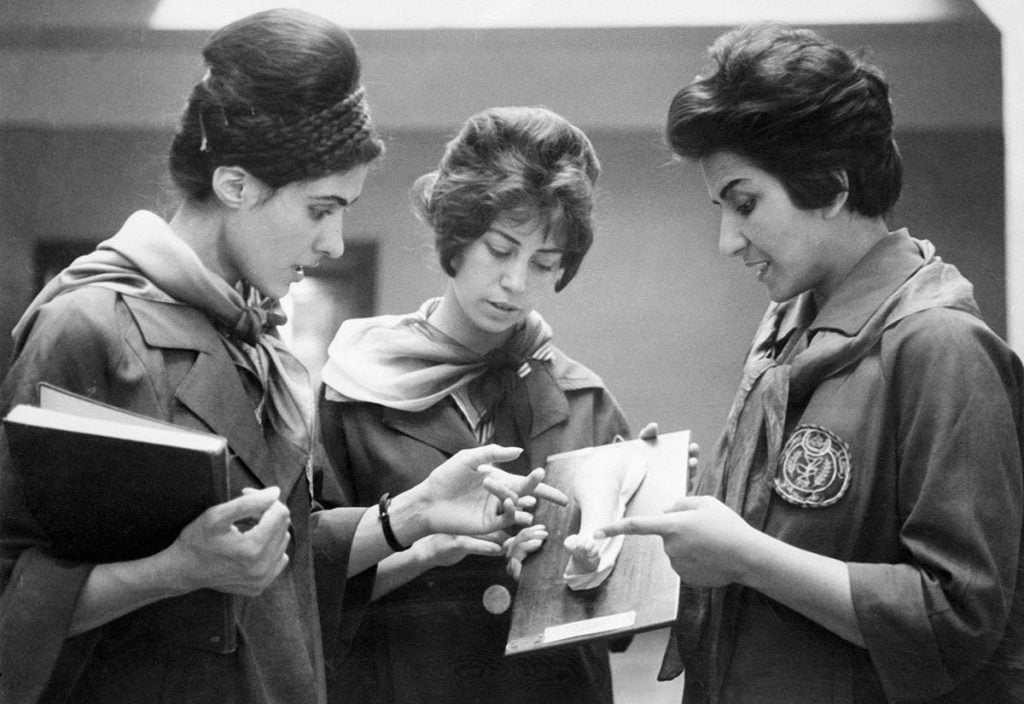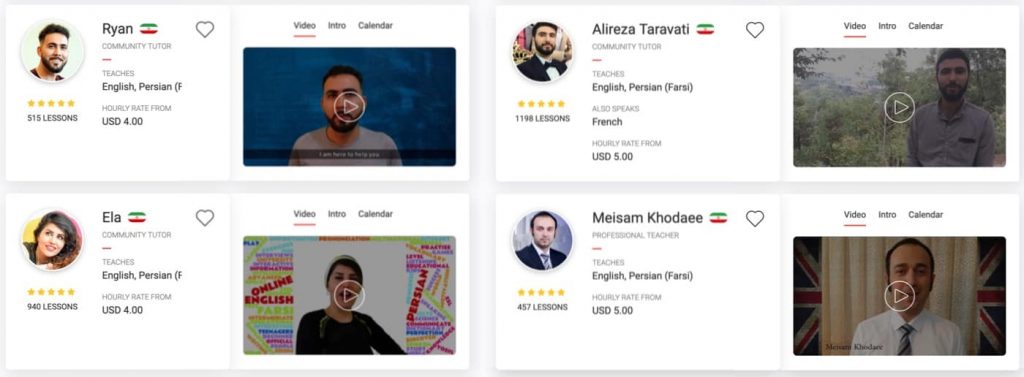Where to Learn Persian Outside Iran
Iran has a lot to offer the traveller, or to the returning Persian who wants to master their mother tongue. But Iran’s government is unpredictable, and travel there isn’t save for everyone. So the question arises: How and where can one learn Persian outside Iran?
Iran has stunning nature, friendly and welcoming people, and an elegant, sonorous language, with beautiful script, rich poetry and thousands of years of history.
But it’s difficult for many people to go to Iran. It’s difficult for me for political and professional reasons. For others, it’s difficult for a range of reasons usually related to safety. And it may be difficult for you, too.
The good news is that Persian isn’t just spoken in Iran, and there are places you can learn Persian outside Iran.

Contents
Learn Persian/Tajik in Tajikistan
The best place to learn Persian outside Iran (and isn’t a war zone) is in Dushanbe, the capital of Tajikistan.
The variety of Persian that people speak in Tajikistan is the closest to that spoken in Iran. The language is called Tajik, but it’s mutually intelligible. However, there are some important differences between Tajik and Persian.
Firstly, in daily life, Tajik is written in Russian Cyrillic letters. This is in contrast to Iran, where Persian has used an Arabic alphabet (technically the Perso-Arabic alphabet) for many years. The language stays the same, but the script is different.
Here’s an example of a paragraph from the Declaration of Human Rights in Tajik (Cyrillic), Persian Farsi (Perso-Arabic script), and the English translation in the Latin alphabet:
Tajik (Cyrillic)
Тамоми одамон озод ба дунё меоянд ва аз лиҳози манзилату ҳуқуқ бо ҳам баробаранд. Ҳама соҳиби ақлу виҷдонанд, бояд нисбат ба якдигар бародарвор муносабат намоянд.
Persian Farsi (Perso-Arabic)
تمام آدمان آزاد به دنیا میآیند و از لحاظ منزلت و حقوق با هم برابرند. همه صاحب عقل و وجدانند، باید نسبت به یکدیگر برادروار مناسبت نمایند.
English
All human beings are born free and equal in dignity and rights. They are endowed with reason and conscience and should act towards one another in a spirit of brotherhood.
In day to day life, this means you need to know the Cyrillic script to get by. But if you go to a good Persian school, you’ll still be taught the Perso-Arabic script.
There are actually some advantages to the Cyrillic script for learning Persian. It’s much easier to read for fluent English speakers (or those raised in the West) because it’s left-to-right, has some recognisable characters, and it has vowels. Vowels! What a luxury. Perso-Arabic script (like Arabic, or Hebrew) is an “abjad”, a kind of orthographic system that omits vowels. Not having vowels
Secondly, Tajik has a lot of Russian words. A lot of words have entered the vocabulary, including many day-to-day ones. This came about because of decades of Soviet rule and isolation under the USSR.
A few words that are different include:
| English | точики (Tajiki) | فارسی (Persian) |
| potato | картошка (kartoshka) | سیب زمینی (sib zamini) |
| tomato | помидор (pomidor) | گوجه فرنگی (gorjeh farangi) |
| bicycle | велосипед (velosiped) | دوچرخه (doh charkheh) |
| airplane | тайёра (tayyora)* | هواپیما (havapeima) |
| ticket | чипта (chipta) | بلیط (bilit) |
| watermelon | тарбуз (tarbuz) | هندوانه (henduneh) |
| tomorrow | Пагох (pagoh) | فردا (farda) |
* Interestingly, the Tajik word for
The majority of everyday words are the same. If you go out to buy milk, bottled water, honey and bread, you’ll do so in much the same way as you would have in Iran.
The final difference between Tajik and Persian Farsi is the accent. This is pretty significant. Speaking Persian Farsi (or Dari or Tajik) with a different accent does not in any way mean you speak it better or worse, but Tehrani and Shirazi Persian are by far the most widely understood in the region and across the Persian-speaking diaspora, simply due to economic power and the impact of media.
Some major differences between Tajik pronunciation and Tehrani are:
- The long vowel for the alef (ا) changes from aa in Tehrani Persian to a shorter o in Tajik
- The vaav (و) is more often pronounced as av in Tajik, rather than abbreviated to o in Tehrani Persian
- The general rhythm of speech is different (something best observed)
If you speak Tajik to an Iranian, they’ll understand and be fully able to communicate with you, but there’ll be an accent obstacle to overcome. It’s a bit like speaking New Zealand English to an American. It’s totally intelligible, but the American will need to focus hard to not think of scenes from Flight of the Conchords, or ask their interlocutor to say “Please miss, give me six large bits of your best ham” (something I highly recommend you do, by the way).
Otherwise, the day-to-day experience of learning Tajik in Tajikistan is different from learning Persian in Iran. When you study the language, you’ll learn a pure, literary form of the language – possibly even the same Persian spoken in Iran, from Iranian teachers.
But on the streets of
Russian is definitely the second language of the Tajikistan and thus many people educated during USSR rule may feel more comfortable communicating in it.
If you’re hell-bent on learning Tajik — or Persian Farsi, in Tajikistan — your best bet is a school.
The best — and possibly only — school is the “Dushanbe Language Center”. There’s very little information about it on the internet, but essentially, this is where American universities and government organisations send their students and staff to get trained.
Dushanbe Language Center is expensive, and usually sponsored by a home country organisation. The last prices I saw ere US$13,000 for a semester, or $7,000 for a summer program — but I can’t find those prices online now.
For Americans, the Critical Language Scholarship program, sponsored by the US Department of State, gives American students access to an intensive summer program. This might be your best bet!
Learn Persian/Dari in Afghanistan
The second best place to learn Persian is in Afghanistan, where the language is known as either Dari or Farsi, depending on who you ask. Politically, the language is referred to as Dari, but everyday speakers call it “Farsi”.
Let’s start with the most obvious obstacle to studying in Afghanistan: it is still a war zone. Travel advisories from every major country (UK, France, China) say you just shouldn’t go there.

But this shouldn’t stop you by itself. After all, Kabul is still in orange, which means you can go there and you’ll probably be fine if you take effective precautions.

There are two main languages of Afghanistan: Dari (which is Persian Farsi, with variations), and Pashtun. Both are from the same broader language family, but similar French and Italian, are not mutually intelligible.
Both Dari and Pashtun are official languages of Afghanistan. Dari is the most widely spoken, with some 80% of the population speaking it as of 2018, and around half of those speaking it natively. Dari is also the lingua franca for people of many smaller ethnic groups in the country.
Pashtun is the language of the dominant ethnic group, and as such people who speak it have a strong cultural connection with it. So if you choose to learn some Pashtun, you might get a high return-on-investment for just learning a dozen words.
Persian in Afghanistan is written in Perso-Arabic script, just like in Iran. So the differences are reduced to accent and everyday vocabulary.
The most prominent difference between Persian in Afghanistan and Tehran/Shiraz is the pronunciation.
Again, just as I mentioned with Tajiki, there is no “correct” accent of Persian, but the Tehrani/Shirazi accents are the ones most widely understood, just because of the economic and cultural influence of those regions.
Some of the differences in pronunciation between Persian spoken in Afghanistan and Tehran/Shiraz are:
- The letter qaff (ق): Afghans pronounce this similar to Arabic, whereas in most of Iran it’s pronounced as they pronounce the letter ghayn (غ), like a French r as in rouge.
- Preservation of the short a and long aa vowels: In Tehrani and Shirazi Persian, a long aa (alef, ا) is pronounced with a u, and a short a (not written) is often changed to an e. For example, to say “I don’t know” in Persian (نمی دانم), a Tehrani/Shirazi would say “nemidoonam”, whereas an Afghan would say “namidaanam”.
- The letter waaw/vaav (و): In Afghan Persian / Dari the vaav consonant is pronounced as a w sound, as in Arabic, whereas in Iran it is more commonly pronounced as a vowel v.
The second difference between Persian in Afghanistan and Iran is some everyday vocabulary. These are much more subtle than between Tajik and other forms of Persian, and are akin to slang/colloquial differences between British and American English.
For example, the expression “غلط کردی” (ghalat kardi), translates literally to “you did a mistake”. When said by an Afghan it literally means this: “it appears you made an error”. In Persian Farsi, however, it is very accusative, and means “How dare you!” This is just one common example.
Learn Persian Online (At Home)
Both Tajikistan and Afghanistan are ultimately impractical choices for learning Persian. The best choice is definitely to go to Iran, if you can, and second best is probably to learn wherever you can find a Persian language teacher in your home country.
For me, as a “heritage” Persian speaker, this means going to my parents and asking them to humbly teach me to get to the next level. Of course, I’ll be arming myself with books and learning resources to make sure I can make the best use of their time.
See here for more ideas about learning a heritage language.
But other options you have are to get a teacher on italki, where a well-reviewed and experienced tutor can cost as little as US$4 an hour.

Our personal advice: If you can travel to Iran, go there and learn Persian. Otherwise, consider learning in your home country, and visiting Tajikistan and Afghanistan to learn a little about how Persian is spoken there.
Why Learn Persian?
As a prologue, I want to explain why people should learn Persian. It’s not a major world language, and won’t be a “useful” one other than if you have Persian family or plan to stay in Iran for a while.
So the best reason, in my belief, to learn Persian and Persian culture is to bridge cultural gaps between the West and a misunderstood and under-appreciated part of the world.
Many in the West don’t know much about of Iran and Persian people, conflating the two things. It’s true that the government of Iran acts unpredictably and is often in the spotlight for it.
Iran has been in the spotlight for years, and in an almost semi-permanent state of near uprising. It has been accused of covert strikes against neighbouring countries, imprisonment of foreign nationals for trivial reasons, and many incidents of gender-related violence, from the “Blue Girl” incident, to Mahsa Amini’s death during custody and the ensuing riots.
But Persians are not the same as the Iranian government. This is no surprise to you if you know any Persians any of the other major metropolises of the world (there is a large Persian diaspora).
Persians are a gentle, philosophical, quiet people, whose culture is historically a blend of traditional Persian culture dating back thousands of years, with regional influence from the Indian subcontinent and the Arab states.
Even within Iran, anecdotally, the vast majority (at least 75%) of people don’t care what the government is doing and don’t identify religiously; and around 10% actively hate the religious authorities (according to my various friends and teachers who live there).
But more immediately, you can relate to Persians just like you can relate to most people: They’re mostly a generation or two out of poverty and so remember hardship, value things like family success of their children, and enjoy eating lamb, and rice with lots of stuff in it.

Why Some People Can’t Travel to Iran to Learn Persian
There are various reasons for which people can’t travel to Iran which are worth mentioning. That’s the genesis of this blog post.
Firstly, people of minority religions (non-Islamic) are under constant threat. For example, people of Bahá’í background in Iran have been systematically persecuted, imprisoned, tortured, and even killed. People of other religious and ethnic minorities have also had difficult times in the past.
(Editor’s note: I was raised in the Bahá’í religion. While I’m not a Bahá’í myself, and have long distanced myself from any religion, I’ve still been subject to persecution from Iran for my ties to Bahá’ís.)
Secondly, people from countries with no formal relations with Iran. One notable example is Israel. It’s a shame, as Persians are very welcome in Israel (from my own personal experience). But while modern, liberal Iranians would be very welcoming towards Israelis, they’ll never make it past the border.
Americans can only travel to Iran under strict supervision. The visa application takes 60-90 days, can only be done after travel is booked. And Americans have to travel with a guide at all times — which usually means travelling with a tour group.
Third, people of Iranian origin (anyone with ties to the country, even if they never lived there) can only travel with an Iranian passport. Going in with an Iranian passport means one wouldn’t get Australian or British consular protection from things like arbitrary detention or compulsory military service.
Finally, people of some professions, such as journalists or researchers. There have been many cases of detention of people suspected of spying.
If you have a European passport, in most cases, you can get a visa on arrival in Iran. I’d encourage you to take advantage of your situation and travel a well-loved country.






